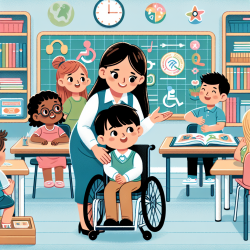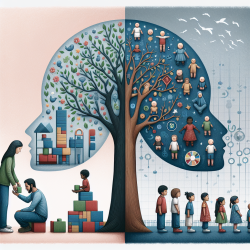Animal-Assisted Counseling: Embracing Diversity for Better Outcomes
Animal-Assisted Counseling (AAC) is a therapeutic approach that leverages the human-animal bond to enhance mental health outcomes. However, as this practice gains popularity, it is crucial for practitioners to consider cultural, religious, and trauma-related factors that influence human-animal interactions. The research article titled "Assessing Cultural, Religious, and Trauma Influences in Human-Animal Interactions for Effective Animal-Assisted Counseling" provides valuable insights into how practitioners can improve their skills and ensure ethical and effective AAC interventions.
Understanding the Cultural Context
The article highlights the importance of cultural humility and awareness in AAC. Practitioners must recognize that clients' perceptions of animals are shaped by their cultural backgrounds, religious beliefs, and past experiences. For instance, in some cultures, animals are revered as sacred, while in others, they may be seen as utilitarian or even taboo. Understanding these cultural nuances is essential for implementing effective and culturally sensitive AAC practices.
Addressing Trauma and Historical Contexts
Historically, animals have been used in aggressive and violent practices, particularly within communities of color. This history can lead to trauma and mistrust of animals, which practitioners must consider when introducing AAC. By acknowledging these historical contexts and addressing potential trauma, practitioners can create a safe and supportive environment for clients.
Implementing AAC Competencies
The American Counseling Association (ACA) and other organizations have established AAC competencies that emphasize the importance of understanding cultural, religious, and trauma-related factors. Practitioners are encouraged to assess clients' histories with animals, evaluate their suitability for AAC, and ensure the welfare of both clients and therapy animals. By aligning their practice with these competencies, practitioners can enhance the effectiveness and safety of AAC interventions.
Practical Steps for Practitioners
- Engage in ongoing training to enhance cultural competence and humility.
- Conduct thorough assessments of clients' cultural backgrounds and past experiences with animals.
- Develop tailored treatment plans that consider clients' unique needs and preferences.
- Foster open communication with clients to address any fears or concerns related to AAC.
- Ensure informed consent and respect clients' autonomy in deciding whether to participate in AAC.
Conclusion
Animal-Assisted Counseling offers a powerful opportunity to enhance therapeutic outcomes, but it requires a culturally informed and ethically sound approach. By embracing diversity and practicing cultural humility, AAC practitioners can create a more inclusive and effective therapeutic landscape. For those interested in exploring this topic further, I encourage you to read the original research paper: Assessing Cultural, Religious, and Trauma Influences in Human-Animal Interactions for Effective Animal-Assisted Counseling.










